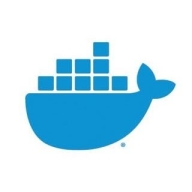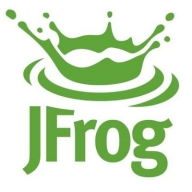

JFrog Xray and Docker compete in software development and security tools. JFrog Xray may have an upper hand in integrated security features, whereas Docker excels in portability and scalability.
Features: JFrog Xray offers deep recursive scanning, advanced vulnerability detection, and comprehensive security insights. Docker provides containerization capabilities, ease of integration, and supports multiple operating environments without requiring customization.
Room for Improvement: JFrog Xray could enhance user interface intuitiveness, increase the speed of updates, and improve integration with non-JFrog products. Docker could benefit from better network isolation, more detailed security logging, and improved resource management efficiency.
Ease of Deployment and Customer Service: JFrog Xray integrates seamlessly with CI/CD tools, focusing on efficient security management. Docker is praised for straightforward container deployment and user-friendly documentation. Docker's community offers extensive support resources, enhancing its deployment experience.
Pricing and ROI: JFrog Xray justifies higher investment with long-term security benefits. Docker's competitive pricing offers strong ROI by reducing infrastructure costs and enhancing efficiency. While JFrog Xray's setup cost is higher, its security benefits offer long-term value; Docker's affordability and quick deployment provide immediate returns.
On a scale of 1 to 10, I would rate the technical support of JFrog Xray an eight because they are very knowledgeable.
When we need clarifications, we contact our account manager, and they arrange demos.
Previously, only one or two applications could run on a server, but now it can handle hundreds of applications, scaling up or down as needed.
According to my use case, it is highly scalable.
I use JFrog Xray primarily for security purposes, and I find it reliable.
We did experience crashes, downtimes, and performance issues with JFrog Xray.
Docker is a time-tested, proven solution with industry-wide applications.
In terms of communication between services, perhaps the configuration within networks between containers could be improved.
somehow you need to adapt your GitLab pipeline and turn them into JFrog pipeline, and this is something they don't really advertise at first—you're obliged to use the JFrog CLI.
When we have given a very long tag, it doesn't work as expected and requires excessive scrolling.
X-ray needs improvement in supporting more than one database, as it currently only supports PostgreSQL.
I consider Docker's pricing to be affordable.
JFrog Xray provides a free trial of 14 days.
The basic scanning capabilities come with Artifactory, however, curation requires additional licenses.
It allows the software to run on various machines without compatibility issues, saving a lot of time.
The most valuable feature is the simple containerization.
The most valuable features of JFrog Xray are its curation capabilities, its native integration with Artifactory, scanning for vulnerabilities, and license compliance features.
The policy-driven approach of JFrog Xray helped me maintain security standards by integrating it in the development pipeline.
With other registries such as ECR, we can use the images only in the AWS cloud. With JFrog, we can use this registry from any cloud or work locally as well.
| Product | Market Share (%) |
|---|---|
| JFrog Xray | 16.3% |
| Docker | 4.4% |
| Other | 79.3% |


| Company Size | Count |
|---|---|
| Small Business | 22 |
| Midsize Enterprise | 4 |
| Large Enterprise | 34 |
| Company Size | Count |
|---|---|
| Small Business | 1 |
| Midsize Enterprise | 3 |
| Large Enterprise | 6 |
Docker is a versatile container platform used for running and deploying applications in isolated environments, ensuring consistency across development, testing, and production.
Docker offers solutions for containerizing applications, automating deployments, and managing infrastructure through its robust platform. It supports CI/CD workflows, provides a development platform for container management, and simplifies the setup by using streamlined tools. Organizations leverage Docker for building microservices, running UI applications, deploying web services, and setting up secure environments. It also facilitates managing containers via Kubernetes and creating development stacks for enhanced productivity.
What are Docker's key features?Industries implement Docker for CI/CD pipelines, scaling services, and improving resource utilization. Tech companies use Docker for building and deploying their software in isolated environments. Finance and healthcare sectors deploy applications securely, ensuring compliance with regulatory standards. Educational institutions set up consistent development environments for coding labs and training students in advanced technologies.
JFrog is on a mission to enable continuous updates through Liquid Software, empowering developers to code high-quality applications that securely flow to end-users with zero downtime. The world’s top brands such as Amazon, Facebook, Google, Netflix, Uber, VMware, and Spotify are among the 4500 companies that already depend on JFrog to manage binaries for their mission-critical applications. JFrog is a privately-held, global company, and is a proud sponsor of the Cloud Native Computing Foundation [CNCF].
If you are a team player and you care and you play to WIN, we have just the job you're looking for.
As we say at JFrog: "Once You Leap Forward You Won't Go Back!"
We monitor all Software Supply Chain Security reviews to prevent fraudulent reviews and keep review quality high. We do not post reviews by company employees or direct competitors. We validate each review for authenticity via cross-reference with LinkedIn, and personal follow-up with the reviewer when necessary.